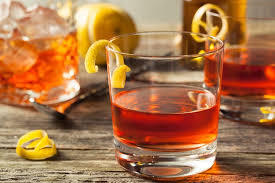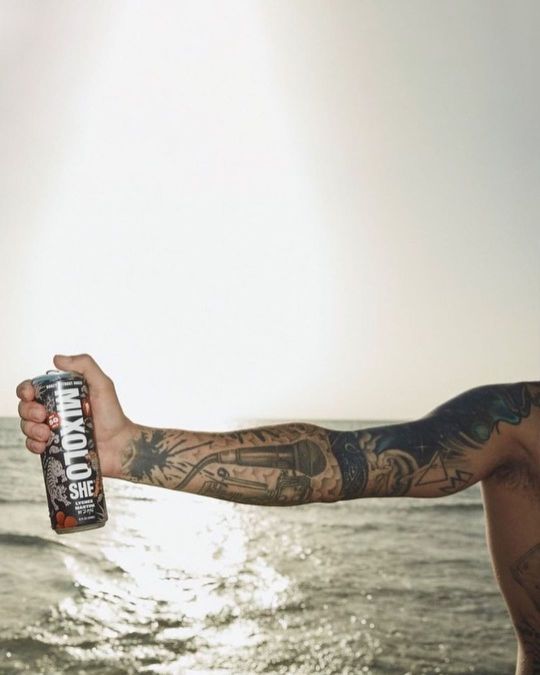#Alcoholic Beverages Market
Text

#serif gothic#lubalin#serifgothic#dispigna#logo#film#typography#type#design#music#Packaging#alcohol#Milk Design NZ#alcoholic beverages market#Major Major
0 notes
Text

#Alcoholic Beverages Market#United Arab Emirates Alcoholic Beverages Market Size#United Arab Emirates Alcoholic Beverages Market#United Arab Emirates Alcoholic Beverages Market Share
0 notes
Text
Alcoholic Beverage Market is expected to reach US$ 2,749.11 Billion by 2032
Alcoholic Beverage Market Size
According to Renub Research, the global alcoholic beverages market reached US$ 1,769.07 billion in 2023 and is projected to grow at a CAGR of 5.02% from 2024 to 2032, reaching US$ 2,749.11 Billion by 2032
Alcoholic beverages are produced through fermentation, and their alcohol content is often increased through distillation. The alcohol percentage in a drink can…

View On WordPress
#alcoholic beverages market#alcoholic beverages market by packaging#alcoholic beverages market by type#alcoholic beverages market share#alcoholic beverages market size#global alcoholic beverages market
0 notes
Text
Alcoholic Beverages Market: Understanding the Impact of Regulatory Changes and Policies
Alcoholic Beverages: Types, Effects and Regulations
Introduction
Alcoholic beverages have been consumed by humans for thousands of years across different cultures and civilizations. While moderate consumption can provide some health benefits, excessive drinking can lead to serious health, social and legal problems. This article discusses the various types of commonly consumed alcoholic drinks, their effects on health as well as regulations around their production and consumption.
Types of Alcoholic Beverages
Alcoholic beverages are broadly classified into three main categories based on the source of alcohol - beer, wine and spirits. Each category has many sub-types.
Beer
Beer is one of the most popular and oldest alcoholic beverages, consumed across the world. It is made by fermenting grains like barley, which yields 3-8% alcohol by volume. Some common beer styles include:
- Lager: Pale lager is the most widely consumed beer style worldwide accounting for over 80% of global beer production. Examples include Budweiser, Coors, etc.
- Ale: Ales have a long fermentation time resulting in various flavors. India Pale Ales (IPA) are very popular today due to their hoppy taste. Ales also include stouts like Guinness.
- Wheat beer: As the name suggests, wheat beers use a large proportion of malted wheat along with barley. Examples are Hoegaarden and Blue Moon.
Wine
Wine is produced by fermenting grapes and can be red, white or rose depending on the variety of grapes used. The alcohol content ranges between 11-14% by volume. Some popular wine varieties include:
- Still wines: These mature in bottles and include varieties like Chardonnay, Sauvignon Blanc, Cabernet Sauvignon, Merlot, Pinot Noir etc.
- Sparkling wines: Champagne is the most famous sparkling wine produced in the Champagne region of France using the tradition method. Other varieties are Prosecco and Cava.
Spirits
Spirits have a higher alcohol content compared to beer and wine, in the range of 25-60%. They are produced by distilling fermented mixtures.
- Whiskey: Made from malted barley or other grains that are fermented and distilled. Varieties are Scotch, Irish, American, Canadian, Japanese whiskies based on country of origin.
- Rum: Produced by fermenting and distilling sugarcane molasses or sugarcane juice. Darker rums are aged for a longer period.
- Tequila: Made from blue agave plants, primarily around Jalisco, Mexico. Can be white, reposado or añejo based on aging.
- Gin: Flavored with juniper berries along with other botanicals and derived from neutral grain spirits.
Health Effects of Alcohol Consumption
Moderate consumption of alcohol, defined as one drink per day for women and 2 drinks per day for men, has been linked to some health benefits like reduced risk of heart disease. However, heavier drinking can cause serious health issues:
- Liver diseases: Excessive long term drinking places a huge burden on the liver and may lead to fatty liver, hepatitis or cirrhosis over the years.
- Cancer risk: The International Agency for Research on Cancer has classified alcohol as a Group 1 carcinogen. Studies show a link between heavy drinking and increased risk of cancers like breast, liver, esophagus and colon cancers.
- Brain impairment: Binge drinking or alcoholism can damage brain regions affecting memory, emotional control and motor functions causing conditions like dementia or Wernicke-Korsakoff syndrome in severe cases.
- Social issues: Alcohol misuse often contributes to problems like domestic violence, abusive behavior, lost productivity and road traffic accidents when combined with driving.
Conclusion
In summary, while moderate alcohol consumption may provide some benefits, excessive drinking should definitely be avoided considering its significant health, social and legal risks. Understanding the types of alcoholic drinks, their effects as well as regulations around production and consumption is important to promote responsible usage.
0 notes
Text
Global Alcoholic Beverages Market Is Estimated To Witness High Growth Owing To Changing Consumer Preferences And Rising Disposable Incomes

The global alcoholic beverages market is estimated to be valued at USD 516.3 billion in 2022 and is expected to exhibit a CAGR of 8.4% over the forecast period of 2023-2029, according to a new report published by Coherent Market Insights.
A) Market Overview:
The alcoholic beverages market includes a variety of beverages such as beer, wine, spirits, and others. These beverages have been consumed for social and leisure purposes for centuries. They are also used in various cultural and religious ceremonies worldwide. In recent years, there has been a significant shift in consumer preferences, with an increasing demand for craft beers and premium spirits. The market is also witnessing the emergence of new trends, such as the growing popularity of low-alcohol and non-alcoholic beverages.
B) Market Dynamics:
The growth of the alcoholic beverages market can be attributed to two key drivers: changing consumer preferences and rising disposable incomes. Firstly, consumers are increasingly seeking unique and flavorful alcoholic beverages, driving the demand for craft beers, premium spirits, and niche wine varieties. Additionally, the rising disposable incomes of consumers in emerging economies have led to an increase in their purchasing power, enabling them to afford more expensive and premium alcoholic beverages.
For example, the increasing popularity of craft beer can be seen as a driver for the market. Craft beers offer unique flavors and are often produced by small-scale breweries with a focus on quality and craftsmanship. Consumers are willing to pay a premium for these products due to their distinct taste and limited availability.
Another driver is the rise in disposable incomes in developing countries. As the middle class continues to expand, consumers have more money to spend on leisure activities, including alcoholic beverages. This has resulted in an increased demand for premium and luxury products in these regions.
C) Market Key Trends:
One key trend in the Alcoholic Beverages Market is the growing popularity of low-alcohol and non-alcoholic beverages. With an increasing focus on health and wellness, consumers are seeking alternatives to traditional alcoholic beverages. This has led to the development of a wide range of low-alcohol and non-alcoholic options, including mocktails, non-alcoholic beers, and spirits. For example, the market for non-alcoholic beers has witnessed significant growth in recent years, driven by health-conscious consumers who want to enjoy the taste of beer without the alcohol content.
D) SWOT Analysis:
Strengths: Increasing consumer demand for unique and premium alcoholic beverages, rising disposable incomes, and a growing market for low-alcohol and non-alcoholic beverages.
Weaknesses: Government regulations and restrictions on advertising and promotion of alcoholic beverages, increasing health concerns related to excessive alcohol consumption.
Opportunities: Growing consumer markets in emerging economies, increasing demand for craft beers and premium spirits, and a shift towards healthier drinking options.
Threats: Competition from non-alcoholic beverage alternatives, stringent regulations on advertising and labeling of alcoholic beverages, and health-related concerns impacting consumption patterns.
E) Key Takeaways:
The global alcoholic beverages market is expected to witness high growth, exhibiting a CAGR of 8.4% over the forecast period due to changing consumer preferences and rising disposable incomes.
The Asia Pacific region is anticipated to be the fastest-growing and dominating region in the market, driven by the increasing urbanization and rising middle-class population in countries like China and India.
Key players operating in the global alcoholic beverages market include Anheuser-Busch InBev SA/NV, Bacardi Limited, Beam Suntory Inc., Constellation Brands Inc., Diageo Plc, Heineken Holding NV, Molson Coors Brewing Co., Pernod Ricard SA, SABMiller Ltd., and Carlsberg group. These companies are focusing on product innovation, mergers and acquisitions, and strategic partnerships to gain a competitive advantage in the market.
#Alcoholic Beverages Market#Alcoholic Beverages Market Dynamics#Alcoholic Beverages Market Key Trends#Alcohol#Coherent Market Insights
0 notes
Photo

Old Style, 1988
20 notes
·
View notes
Text






We are incredibly excited to announce that @zayn has join Mixoloshe as co-owner and Chief Creative Officer!
Follow the link in bio to purchase his signature Lychee Martini or use our store finder to pick it up at a @walmart near you.
Welcome, Zayn! ❤️❤️❤️
#oh zayn!#CO OWNER and CREATIVE OFFICER akjfsja king of the random ass maneuver#I wanted the version with the info about his titles not just his post and I'm too lazy to go find it#still fucking dying laughing that he's gone into non alcoholic canned beverage competition against bella hadid#but who knows maybe they're working together to corner the whole market
7 notes
·
View notes
Photo


of course there’s a rider diner menu.
#kinda had to scramble to come up with marketable foodstuffs for this one huh#woohoo alcoholic beverages are back tho#kr blacksun
17 notes
·
View notes
Text
DeVANS Expands Six Fields Portfolio with Bold Premium Lagers: Brute and Pilsner
DeVANS Expands its Premium Lager Portfolio: A Game-Changer in India’s Beer Market
Introduction
Jammu-based alcobev leader, DeVANS, has made significant strides in the Indian beer market by expanding its widely acclaimed Six Fields portfolio. As a leader in the industry, DeVANS is known for pushing the boundaries of innovation in the world of beer. With its new foray into the Premium Lager…
#Alcoholic Beverages#Belgian Style Wheat Beer#Craft Beer in India#DeVANS Brewery#Indian Beer Market#New Beer Launch#Premium Lager Beer#Six Fields Brute#Six Fields Pilsner#Strong Beer India
0 notes
Text

Global Non-Alcoholic Beverage Market | BIS Research
The global non-alcoholic beverage market is projected to reach $3,805.4 billion by 2034 from $1,698.0 billion in 2023, growing at a CAGR of 7.75% during the forecast period of 2024-2034, according to BIS Research.
#Non-Alcoholic Beverage Market#Non-Alcoholic Beverage Industry#Non-Alcoholic Beverage Market Size#Non-Alcoholic Beverage Market Report#BIS Research#Non-Alcoholic Beverage Market Analysis#Non-Alcoholic Beverage Market Insights#FoodTech
1 note
·
View note
Text
Nemiroff De Luxe Vodka: A Taste of Ukrainian Heritage Now in Australia
Discover the timeless craftsmanship and vibrant flavours of Nemiroff De Luxe Vodka, the latest addition to Australia’s premium spirit selection.
Nemiroff, a renowned Ukrainian vodka brand with a history dating back to 1872, has launched its premium Nemiroff De Luxe Vodka in Australia. Crafted in the historic town of Nemyriv, Ukraine, Nemiroff De Luxe Vodka is a celebration of tradition, quality,…
#Alcohol#Australian Launch#Australian market#Bar#Beverage#Booze#Cocktail Recipes#craftsmanship#Dan Murphy’s#Distillery#Drink#Eco-Friendly#Espresso Martini#Filtration Process#Fine Drinks#Flavoured Vodka#heritage#high quality#History#Imported Vodka#Juniper#Linden Flower#Liquor#Liquor Store#Mixology#Negroski#Nemiroff#Nemiroff De Luxe#Nemyriv#Premium Spirits
0 notes
Text
Premiumization Trends in the Alcoholic Beverages Market: A Market Insight Report

Alcoholic beverages such as beer, wine and spirits are popular recreational drinks consumed worldwide. Beer is one of the most widely consumed alcoholic beverages, prepared by the brewing and fermentation of crops such as barley and grains. Wines are produced by the fermentation of grapes and other fruits, containing flavors and aromas. Spirits are distilled beverages that contain a high percentage of alcohol and are produced by distillation of fermented fruit, grain, vegetables or milk. The growing social acceptance and increased consumption of premium and craft varieties have been driving the sales of alcoholic beverages.
The global alcoholic beverages market is estimated to be valued at US$ 1,769.41 Bn in 2023 and is expected to exhibit a CAGR of 2.5% over the forecast period 2023 to 2030, as highlighted in a new report published by Coherent Market Insights.
Market Opportunity: Increased consumption among millennials and Gen Z presents a lucrative opportunity in the alcoholic beverages market. These demographics prefer premium and craft beers, spirits and wines over regular varieties. As their spending power increases, they are willing to pay premium prices for high-quality artisanal beverages. Companies are focusing on innovations to attract these customer segments through varied flavors and unique drinking experiences. For instance, the development of hard seltzers which contain lower alcohol content and fewer calories. The demand for these new alcoholic products is growing significantly among younger generations. Manufacturers introducing product lines tailored to changing consumer preferences among millennials and Gen Z can gain an edge in the market.
Porter's Analysis
Threat of new entrants: The alcoholic beverages market is mature and faces high entry barriers due to significant capital requirements and established brand recognition of existing players.
Bargaining power of buyers: Buyers in the alcoholic beverages market have moderate bargaining power due to the availability of substitute products and bargaining clubs formed by retail chains. However, brand loyalty acts as a deterrent.
Bargaining power of suppliers: Suppliers of raw materials such as grapes, barley, wheat etc have moderate to high bargaining power as suppliers are concentrated for key raw materials.
Threat of new substitutes: Threat from new substitutes is moderate as alternatives like beer, wine and spirits are each other's substitutes to some extent. Improvised versions of existing products can increase substitutability.
Competitive rivalry: The alcoholic beverages market is highly competitive with large multinational corporations dominating production and sales. Competition is based on branding, marketing, regional expansion and product innovation.
SWOT Analysis
Strengths: Strong brand recognition, diversified product portfolio, global distribution network and economies of scale give large players competitive advantage.
Weaknesses: Heavy taxation, health awareness and regulations are challenging growth. Currency fluctuations impact import-export economics.
Opportunities: Emerging markets offer lucrative prospects. Premiumization and new product varieties/flavors boost demand. E-commerce grows sales reach.
Threats: Unsustainable agricultural practices may impact input supply. Regulation tightening and social stigmas affect consumption in regions. Economic slowdowns curb discretionary spending.
Key Takeaways
The global alcoholic beverages market is expected to witness high growth over the forecast period aided by premiumization trends, emerging market demand, and product innovation. The global alcoholic beverages market is estimated to be valued at US$ 1,769.41 Bn in 2023 and is expected to exhibit a CAGR of 2.5% over the forecast period 2023 to 2030.
The Asia Pacific region dominates the market currently and is expected to maintain fastest growth through 2030 led by China, India and other developing Asian countries where rising incomes are driving alcoholic beverage consumption. Asia Pacific accounted for over 35% of global alcoholic beverage market share in 2022 led by China, India and increasing disposable incomes in the region. Growth will be driven by young populations adopting western drinking culture and experimenting with premium varieties.
Key players operating in the alcoholic beverages market are Anheuser-Busch Inbev (BUD) (Belgium), Asahi Group (Japan), Bacardi (Bermuda), Brown Forman (U.S.), Carlsberg (Denmark), Constellation Brands (U.S.), Diageo (U.K.), Heineken (Netherlands), Pernod Ricard (France), Suntory (Japan). These players compete based on branding, geographical reach, premiumization and product line extensions to drive volumes. consolidation is observed in the industry with mega-mergers.
0 notes
Text
Cheers to Innovation: Exploring Emerging Technologies Shaping the Alcoholic Beverages Market

In an ever-evolving landscape, where innovation has become synonymous with progress, the alcoholic beverages market stands as a prime example of an industry undergoing a transformative journey. As we raise our glasses to tradition, we also toast to the ingenious technologies that are reshaping the way we produce, distribute, and enjoy alcoholic beverages. The fusion of science and artistry has given birth to a wave of breakthroughs, transcending the boundaries of conventional brewing and distillation methods.
From molecular gastronomy-inspired cocktails to AI-powered brewing systems, the realm of innovation is leaving an indelible mark on how we perceive and interact with alcoholic beverages. One of the prominent trends gracing this industry is the utilization of biotechnology and genetic engineering in crafting unique flavors and enhancing the quality of alcoholic products. Yeast, a microscopic workhorse of fermentation, has become the canvas for scientists to paint a myriad of tastes.
By manipulating yeast strains at a genetic level, researchers have unlocked new flavor profiles and improved fermentation efficiency, leading to a spectrum of novel beverages that tantalize the palate. The application of data-driven technologies has also penetrated the realm of Alcoholic Beverages Market. With the advent of the Internet of Things (IoT) and smart devices, producers can now monitor and control the entire production process remotely. This not only ensures consistency in quality but also reduces wastage and minimizes energy consumption, aligning the industry with sustainable practices.
Virtual and augmented reality have added a surreal twist to the way consumers engage with alcoholic brands. Through immersive experiences, potential customers can virtually tour vineyards, witness the distillation process, and even attend digital tastings, all from the comfort of their homes. These technologies are not only bridging geographical gaps but are also providing a deeper understanding of the craftsmanship that goes into every bottle. Furthermore, the focus on health and wellness has birthed a demand for low-alcohol and non-alcoholic alternatives.
As we raise our glasses to toast the timeless traditions of the alcoholic beverages market, we must also acknowledge the exciting realm of innovation that is shaping its future. Through biotechnology, data-driven processes, virtual experiences, and health-conscious alternatives, emerging technologies are orchestrating a symphony of change. The fusion of age-old craftsmanship with cutting-edge advancements is propelling the industry into uncharted territories, promising a tantalizing array of flavors and experiences for enthusiasts to savor and explore.
#Alcoholic Beverages Market#Alcoholic Beverages Market Anaysis#Alcoholic Beverages Market Technologies#Alcohol Beverages#Coherent Market Insights
0 notes